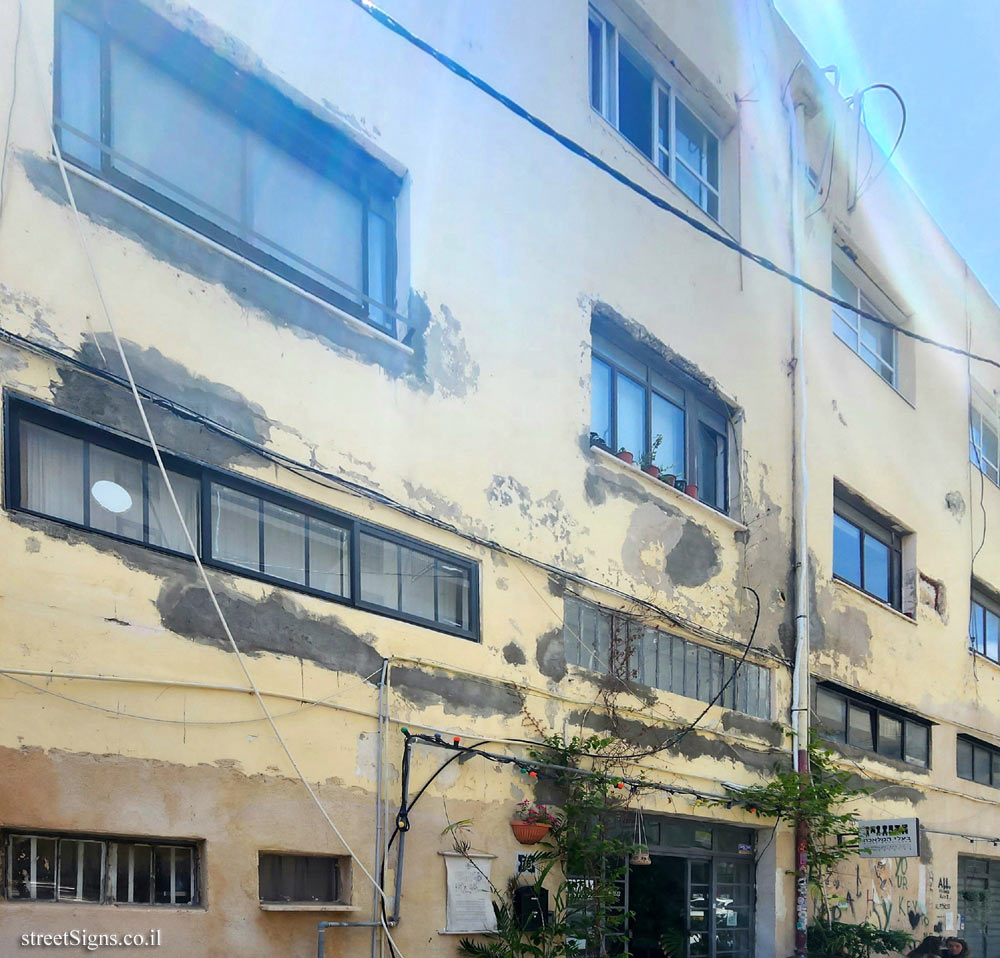The building was photographed on the same day by the same photographer
 Click for a larger image Translation of the text on the sign
Click for a larger image Translation of the text on the sign:
[Symbol Palestine - High Commissioner
Area map: DISTRICT SOUTHERN / SUB-DISTRICT JAFFA]
Government House in Jaffa During the 1930s, most of the vacant lots were built in the neighborhood that was established in the area of Pardes Mustakim (the neighborhood that is now known as the Noga neighborhood). At the southeastern end of the complex, near the extreme houses of the American-German colony, the Karaso family built a large building that dominates an entire block in the same decade. From Abu Al-Huda Street (today Porya Street) to Nakhas Pasha Street (today Nachama Street). The ground floor of the building was designated for garages and warehouses. The other two floors are for offices. This building was used from 1936 to 1948 as the government house. Here was the office of the governor of Jaffa, and from here the Mandatory Southern District was administered. In the 1930s, the building also housed the Taboo offices (Land registration). Land brokers and land buyers had to come here during the bloody events. Sometimes at the risk of lives. This is until the opening of the Taboo offices in Tel Aviv.
At the end of World War II, with the worsening of the underground struggle against the British, the administration building, as well as the Tanos house next to it, was included in a security zone established by the British. This area was surrounded by guard posts and barbed wire fences and included most of the area of the American-German colony, including the Mikhakashvili house at 14 Eilat Street that was used by the British Bureau of Investigation. After the establishment of the state, the house passed into the hands of the IDF and the security establishment and served various functions.
The section of Nitsana Street adjacent to the building (between Nechama and Poriya streets was included in the area of the military camp and was closed to civilian traffic). At the beginning of the current millennium, the army evacuated the building. In the years 2009-2012, the village project (The Village) was built nearby and the wall at the end of Nechama Street (between the Government House and Tanos House) became the entrance to the underground parking lot of the new project, taking advantage of the height differences between Nechama Street and the project area.
by Danny Recht

 Click for a larger image
Click for a larger image